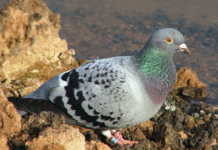RESEARCHERS at the University of Sydney and University of São Paulo, Brazil, estimate 20 percent of the malaria risk in deforestation hot spots is driven by the international trade of exports including: coffee, timber, soybean, cocoa, wood products, palm oil, tobacco, beef and cotton.
“What does this mean for affluent consumers?” asks senior author Professor Manfred Lenzen, from the Centre for Integrated Sustainability Analysis in the School of Physics at University of Sydney. “We need to be more mindful of our consumption and procurement, and avoid buying from sources implicated with deforestation, and support sustainable land ownership in developing countries.”
Previous studies have shown deforestation and rainforest disturbances can increase the transmission of malaria by creating conditions where mosquitoes thrive: warmer habitats and fewer predators. The study, published in Nature Communications today, is the first to link global demand for goods that increase deforestation to a rise in malaria risk in humans.
“This study is the first to assess the role of global consumption in increasing deforestation and, in turn, malaria risk,” said co-author Dr Arunima Malik, from the Centre for Integrated Sustainability Analysis in the School of Physics. “Unsustainable human consumption is clearly driving this trend.” Professor Lenzen said: “Directing consumption away from deforestation has benefits beyond the malaria link; it will help reducing biodiversity loss and greenhouse gas emissions as well.”
Direct links
The authors of the study investigated links between the increasing risk of malaria in developing countries to products demanded by distant consumers. “We achieved this by quantitatively relating malaria incidence first with deforestation, then to primary commodity production, which we then connected to global supply chain networks and ultimately to worldwide consumer demand,” Dr Malik said.
The final step was accomplished by coupling a highly detailed and large international database with an established and widely used analytical technique – multiregion input-output (MRIO) analysis. “This work goes beyond simple incidence mapping and correlations, in that it unveils a global supply-chain network that links malaria occurring in specific locations because of deforestation with globally dispersed consumption,” Dr Malik said.
A call for change
The results of the study can be used for more demand-side approaches to mitigating malaria incidence by focusing on regulating malaria-impacted global supply chains. Demand-side initiatives such as product labelling and certification, supply-chain dialogue and green procurement standards have been successful in addressing trade related global problems such as deforestation, threats to species and child labour.
Legal mechanisms can also be a good action to malaria control, said Dr Leonardo Chaves, a co-author of the study, in the Department of Epidemiology, School of Public Health, University of São Paulo, Brazil. However, in Brazil, the agribusiness sector has criticised environmental legislation that obliges landowners to conserve a proportion of their land with native vegetation.
“If we lose this land to agricultural use we could greatly increase malaria risk, and the bill of each case of malaria in the Amazon is paid by poor and vulnerable families in this region,” Dr Chaves said. “Development never reaches the small rural producer; it just makes illness.”

















